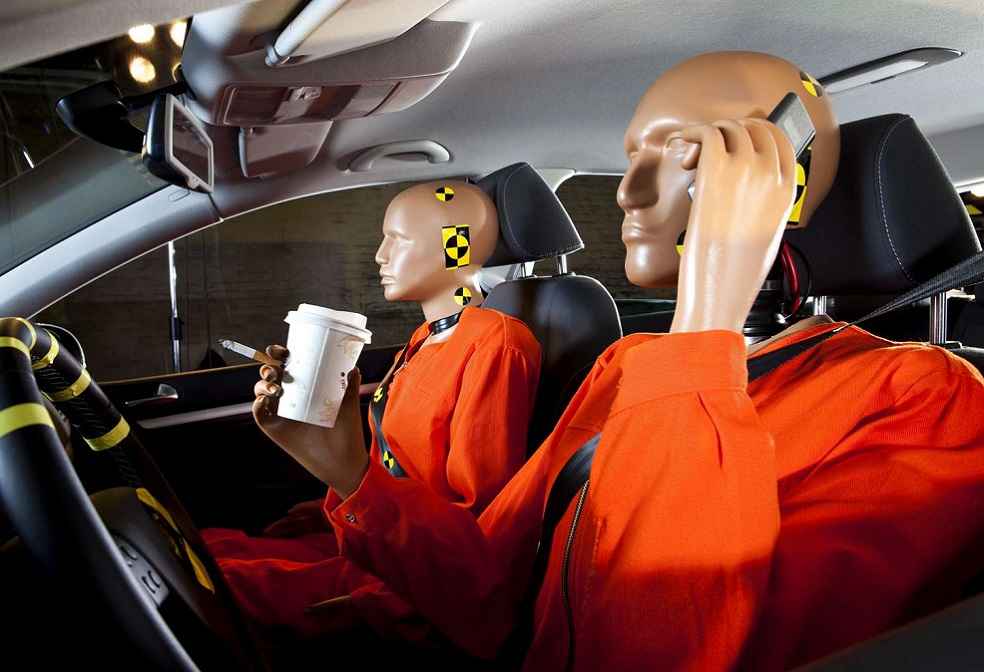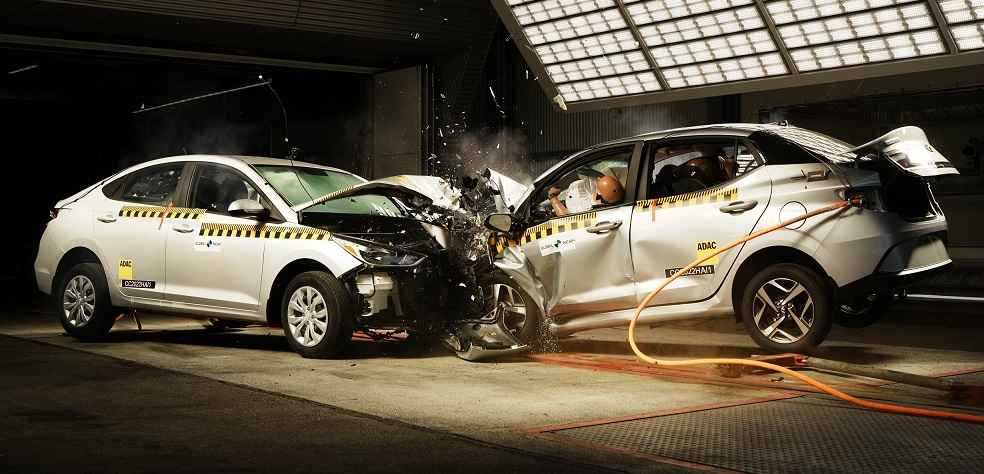Mercedes-Benz has taken a revolutionary step in vehicle safety, conducting the first-ever public crash test involving solely electric vehicles (EVs) at the renowned Technology Centre for Vehicle Safety in Sindelfingen. The luxury automobile giant chose to surpass conventional legal and industry standards, aiming for a more accurate representation of real-world vehicular collisions.
Unlike traditional Euro NCAP protocols, which involve a frontal impact test with a 1,400 kg trolley at a speed of 50 km/h, Mercedes-Benz opted for a more authentic approach. The test involved two of its electric models, the EQA and EQS SUVs, in a collision at an elevated speed of 56 km/h. This enhanced setup aimed at simulating real-life accident conditions, ensuring that the results were as true to real-world possibilities as possible.
Focusing on the practical applicability of the test, Mercedes-Benz designed the collision to mirror common occurrences on rural roads, such as challenging overtaking situations. The vehicles exhibited impressive structural resilience, effectively absorbing the impact, preserving the passenger compartments, and ensuring that the high-voltage systems were immediately deactivated—prioritizing the passengers’ safety and ease of emergency exits.

Mercedes-Benz’s commitment to safety was further echoed by Markus Schäfer, a senior company executive. He reaffirmed the brand’s goal to not just meet but exceed global safety objectives like the “Vision Zero” initiative endorsed by authoritative organizations like the WHO and United Nations Regional Commissions.
With its enhanced safety measures, Mercedes-Benz also launched the ‘Safety Symphony’ campaign. This initiative illustrates the coordination of various safety systems during a collision, underscoring the brand’s comprehensive approach to vehicular safety, as highlighted by the campaign’s hashtag #allforsafety.
The company’s nuanced approach to testing also included the use of diverse crash test dummies, emphasizing its commitment to ensuring vehicle safety for a broad spectrum of passengers. Mercedes-Benz’s detailed and inclusive approach aligns with its continuous efforts to elevate safety standards and address the multifaceted aspects of real-world driving scenarios.

The Technology Centre for Vehicle Safety, with its innovative facilities, serves as a cornerstone in Mercedes-Benz’s relentless pursuit of automotive safety excellence. Through rigorous testing and research, the center continuously enhances the brand’s capacity to understand and improve upon existing safety systems.
Mercedes-Benz’s pioneering initiative marks the automotive industry’s trajectory toward a future where electric vehicle safety is paramount, promising drivers and passengers a higher standard of safety and assurance on the roads.
AUTO TECH | EV Batteries Pose Environmental Risks, Study Finds





